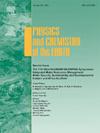气候变化对中东和北非地区资源的影响:系统和批判性审查
IF 3
3区 地球科学
Q2 GEOSCIENCES, MULTIDISCIPLINARY
引用次数: 0
摘要
众所周知,中东和北非(MENA)气候干旱,由于气候变化、高温、人口增长、城市化、地下水过度开采、政治不稳定、社会因素和水资源管理不善而面临水资源短缺的挑战。本文对气候变化对资源的多方面影响,特别是对中东和北非国家的水、能源和粮食(WEF)关系进行了批判性审查。由于城市化和工业活动,日益增长的人口压力(到 2050 年估计为 7.24 亿人)导致对能源,特别是电力的需求增加(从 1990 年到 2022 年增加了 416%),到 2020 年达到 1060 太瓦时。这加剧了气候变化,导致海湾合作委员会(GCC)国家和伊朗的地区气温升高,自 1970 年以来已上升了 1.2 °C。据估计,到 2050 年,中东和北非国家的气温将上升 1.5 至 3 °C。这反过来又加剧了干旱,造成严重的热浪和水资源短缺,尤其是在埃及、也门、叙利亚和苏丹,影响到粮食生产和安全。关系概念强调了中东和北非地区在气候变化中面临的水、能源和粮食等相互关联的挑战,其中一个因素的变化会对其他因素产生影响。适应这种动态情景涉及海水淡化等解决方案,其中太阳能和风能等可再生能源以及太阳能和化石燃料相结合的混合系统提供了一种多功能解决方案;即白天利用太阳能,而化石燃料则在日照不足或需求量大时提供备用电力。本文章由计算机程序翻译,如有差异,请以英文原文为准。

Climate change impact on resources in the MENA region: a systematic and critical review
The Middle East and North Africa (MENA) are known for their arid climate and water scarcity challenges due to climate change, high temperature, population growth, urbanization, over-extraction of groundwater, political instability, social factors and water mismanagement. The multifaceted impacts of climate change on resources with a particular reference to the water, energy and food (WEF) nexus in the MENA countries are critically reviewed. Increasing population pressure (estimated 724 million by 2050) leads to higher demands on energy, especially electricity (an increase of 416 % from 1990 to 2022.), reaching 1060 TWh in 2020 due to urbanization and industry activities. This contributes to climate change, leading to higher regional temperatures in in Gulf Cooperation Council (GCC) countries and Iran, which has risen by 1.2 °C since 1970. It is estimated that by 2050, temperature increases in MENA countries range from 1.5 to 3 °C. This in turn exacerbates drought, causing severe heatwaves and water scarcity, particularly in Egypt, Yemen, Syria and Sudan, affecting food production and security. The nexus concept highlights the interconnected challenges of water, energy and food in the MENA region amid climate change, where alterations in one element reverberate through the others. Adapting to this dynamic scenario involves solutions such as water desalination, where energy generated by renewable sources such as solar and wind as well as hybrid systems combining solar and fossil fuels offers a versatile solution; i.e., solar energy is utilized during the day, while fossil fuels provide backup power during periods of low sunlight or high demand.
求助全文
通过发布文献求助,成功后即可免费获取论文全文。
去求助
来源期刊

Physics and Chemistry of the Earth
地学-地球科学综合
CiteScore
5.40
自引率
2.70%
发文量
176
审稿时长
31.6 weeks
期刊介绍:
Physics and Chemistry of the Earth is an international interdisciplinary journal for the rapid publication of collections of refereed communications in separate thematic issues, either stemming from scientific meetings, or, especially compiled for the occasion. There is no restriction on the length of articles published in the journal. Physics and Chemistry of the Earth incorporates the separate Parts A, B and C which existed until the end of 2001.
Please note: the Editors are unable to consider submissions that are not invited or linked to a thematic issue. Please do not submit unsolicited papers.
The journal covers the following subject areas:
-Solid Earth and Geodesy:
(geology, geochemistry, tectonophysics, seismology, volcanology, palaeomagnetism and rock magnetism, electromagnetism and potential fields, marine and environmental geosciences as well as geodesy).
-Hydrology, Oceans and Atmosphere:
(hydrology and water resources research, engineering and management, oceanography and oceanic chemistry, shelf, sea, lake and river sciences, meteorology and atmospheric sciences incl. chemistry as well as climatology and glaciology).
-Solar-Terrestrial and Planetary Science:
(solar, heliospheric and solar-planetary sciences, geology, geophysics and atmospheric sciences of planets, satellites and small bodies as well as cosmochemistry and exobiology).
 求助内容:
求助内容: 应助结果提醒方式:
应助结果提醒方式:


